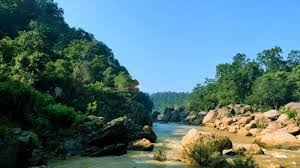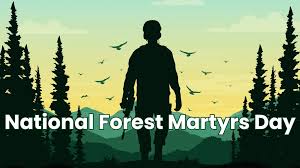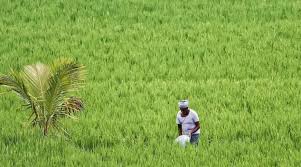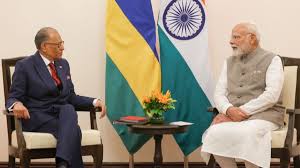Today’s Current Affairs: 13th September 2025 for UPSC IAS exams, State PSC exams, SSC CGL, State SSC, RRB, Railways, Banking Exam & IBPS, etc
Table of Contents
Biodiversity Heritage Sites:

The government recently declared 8.6 acres of green cover at Cantonment Railway Colony as a biodiversity heritage site — the second in Bengaluru after Gandhi Krishi Vigyan Kendra (GKVK).
- BHS are rich biodiversity areas and are important components of local ecosystems which are being conserved and managed by the society.
- BHS are unique ecosystems having rich biodiversity comprising any one or more of the following components:
- Richness of wild as well as domesticated species or intra-specific categories.
- High endemism.
- Presence of rare and threatened species, keystone species, and species of evolutionary significance.
- Wild ancestors of domestic/cultivated species or their varieties.
- Past pre-eminence of biological components represented by fossil beds and having significant cultural, ethical or aesthetic values and are important for the maintenance of cultural diversity, with or without a long history of human association with them.
- They may spread over terrestrial, aquatic, coastal and inland and marine ecosystems having rich biodiversity.
- Under Section-37 of the Biological Diversity Act, 2002, the State Government, in consultation with local bodies, may notify areas of biodiversity importance as BHS.
- State Governments are empowered to frame schemes for compensating or rehabilitating any person or section of people economically affected by such notification.
- The State Government, in consultation with the Central Government, may frame rules for the management and conservation of BHS.
- The creation of BHS may not put any restriction on the prevailing practices and usages of the local communities other than those voluntarily decided by them.
- The purpose of declaring BHS is to enhance the quality of life of the local communities through the conservation of such sites.
- In 2007, the Nallur Tamarind Grove in Bengaluru, Karnataka, was designated as India’s first BHS.
Isobutanol:

The Automotive Research Association of India (ARAI) is working to explore the possibility of blending 10% isobutanol with diesel, Union Minister for Transport said recently.
- Isobutanol , also called isobutyl alcohol, is an alcohol with the chemical formula C₄H₁₀O and one of the four isomers of butanol.
- It is a clear, colorless liquid with a characteristic odor.
- It is only moderately soluble in water.
- It is very flammable and has a flash point that is only slightly above normal room temperatures.
- Its vapors are heavier than air and can spread unnoticed along the ground.
- Skin contact, ingestion, and inhalation of isobutanol can be harmful to health.
- The compound causes skin irritation and severe eye damage, including loss of vision.
- It is used as a solvent in the flavor, fragrance, pharmaceutical, and pesticide industries and as a chemical manufacturing ingredient for products such as lacquer, paint strippers, paint primer, and craft paints.
- It is an approved food additive and is also naturally occurring in some foods and many alcoholic beverages.
- Isobutanol may also be used as a biofuel because, like ethanol, it can be manufactured from plants. It can be made from ethanol using fermentation processes.
- It possesses some favorable properties that make it an attractive fuel for internal combustion engines.
- For instance, when compared to ethanol, isobutanol features a higher heating value.
- Isobutanol is less corrosive than ethanol and is much less hygroscopic, which enables it to be transported using the existing fuel infrastructure.
- Moreover, its addition to gasoline does not distort the fuel blend’s vapor pressure to the same extent as ethanol does. All of this while having a high octane rating.
Perpetual Bonds:

Indian Renewable Energy Development Agency Ltd (IREDA) recently said it has raised ₹453 crore at 7.70% per annum through its second issue of Perpetual Bonds, a step that strengthens its capital base for financing green energy projects.
- It is a fixed-income security that has no maturity date and theoretically pays interest forever.
- The perpetual bond means the issuer is under no obligation to redeem the principal amount at any point.
- Also known as “perps” or “consol bonds,” these instruments represent a permanent source of capital for the issuer.
- It represents one of the purest forms of debt that closely resembles equity in certain aspects.
- With these bonds, investors do not receive the principal amount back unless the issuer opts to call the bond.
- This action involves returning the principal and discontinuing interest payments to bondholders.
- This call feature provides issuers with the flexibility to refinance if market conditions become favourable.
- Most modern perpetual bonds include call provisions that allow issuers to redeem them after a specified period, typically 5 to 10 years from issuance.
- To compensate for the indefinite tenure and higher risk, perpetual bonds generally offer higher interest rates.
- If the issuer goes bankrupt, perpetual bondholders get paid after other creditors but before shareholders, placing them in a middle priority tier.
- Perpetual bonds are highly sensitive to changes in interest rates, which can cause significant fluctuations in their market price.
- In India, banks are the primary entities that issue perpetual bonds to meet their capital requirements.
- Even though perpetual bonds do not provide principal repayment to investors, they can be an attractive investment option for individuals aiming to generate a stable income for a long period of time.
- From an accounting perspective, perpetual bonds often receive equity-like treatment on balance sheets, making them attractive for organisations looking to strengthen their capital structure without diluting existing shareholders’ ownership.
National Forest Martyrs Day 2025:

Tributes were paid to Forest Department personnel who died while engaged in conservation works during the National Forest Martyrs Day, observed recently.
- It is observed annually on September 11th in India to honor the sacrifices of those who have laid down their lives in defense of the country’s forests and wildlife.
- The day honours protective environmentalists and personnel of the forest who have experienced certain risks in the process of conservation of natural resources.
- The day goes back to the memory of the Khejarli Massacre, which took place in 1730 in the Marwar Kingdom.
- The then Maharaja Abhai Singh demanded Khejri trees from the Bishnoi village of Khejarli to be cut down to provide timber for his new palace.
- However, his action was resisted by the Bishnoi community, which has always been very sensitive towards the natural community.
- Villagers under the leadership of Amrita Devi Bishnoi protested by hugging trees to safeguard them.
- Unfortunately, Devi and many other members of the village were slain while defending the trees.
- It was estimated that 363 of them died while protesting.
- Their legacy inspired later conservation movements, including the Chipko Movement, shaping India’s environmental ethos.
- In recognition of this sacrifice, the Ministry of Environment, Forest and Climate Change of India declared September 11 as the National Forest Martyrs Day in 2013.
- This day is a tribute to all those who defended nature against exploitation, from illegal logging to poaching.
- It underscores that forests are not just resources; they are lifelines that regulate the climate, purify air and water, and support biodiversity.
- The day is marked by memorial services, tree plantation drives, awareness campaigns, and educational events organised by the Ministry of Environment, state forest departments, and schools.
- Communities come together to honour martyrs and spread awareness about eco-conscious living.
Cyrtodactylus vanarakshaka : New Species Of Gecko

A new species of bent-toed gecko, recorded from the montane forests of central Assam.
- Cyrtodactylus vanarakshaka is a bent-toed gecko belongs to the Cyrtodactylus khasiensis group.
- It was spotted from the forested slopes of Dima Hasao’s Jatinga, a unique ecological transition zone within the Barail Hills.
- It has been named after the Assam Forest Department.
- The word “vanarakshaka,” derived from the Sanskrit words “vana” (forest) and “rakshaka” (protector), refers to the Assam Forest Department.
- The species is known for high levels of endemism and restricted distributions.
- This finding has increased the number of Cyrtodactylus species known from Assam to five.
- Gecko are reptiles and are found on all the continents except Antarctica.
- These colorful lizards have adapted to habitats from rainforests, to deserts, to cold mountain slopes.
- These are mostly small, usually nocturnal reptiles.
- Geckos are spread across six families: Carphodactylidae, Diplodactylidae, Eublepharidae, Gekkonidae, Phyllodactylidae, and Sphaerodactylidae.
All India Debt and Investment Survey (AIDIS) & Situation Assessment Survey:

The All India Debt and Investment Survey (AIDIS) and the Situation Assessment Survey (SAS) of Agricultural Households are scheduled to be conducted from July 2026 to June 2027.
- The AIDIS is one of India’s most significant surveys on household finance.
- Its origins go back to the All India Rural Credit Survey (1951-52), later expanded to cover both debt and investment in 1961-62.
- Since then, the NSO has conducted AIDIS roughly once every decade, most recently in the 77th Round (2019) at the request of the Reserve Bank of India (RBI).
- The survey provides critical data on household indebtedness and asset ownership across both rural and urban areas.
- Its findings are instrumental in shaping national accounts, assessing inequality in asset distribution, understanding credit markets, and informing policies of the RBI, MoSPI, and other government institutions.
- It is conducted by the National Statistics Office (NSO), under the Ministry of Statistics and Programme Implementation (MoSPI).
- Situation Assessment Survey (SAS) of Agricultural Households first launched in 2003.
- It is designed to assess the economic conditions of farming communities.
- It was expanded in 2013 to cover all agricultural households and further strengthened in the 2019 round.
- It now provides comprehensive insights into the livelihoods of agricultural households.
- It covers Household income and expenditure, Indebtedness and access to credit, Land and livestock ownership, Crop and livestock production, and use of technology and Access to government schemes and crop insurance. Farming practices
- The Ministry of Agriculture and Farmers Welfare, NITI Aayog, researchers, and financial institutions utilise the survey findings to shape policies and programmes aimed at agriculture and rural development.
India–Mauritius Special Economic Package:

Mauritius PM Navinchandra Ramgoolam visited Varanasi, where India announced a USD 680 million Special Economic Package covering health, infrastructure, maritime security, and education.
Highlights:
- USD 680 Million Package: Includes grants and line of credit for health, infrastructure, and maritime projects.
- Construction of New Sir Seewoosagur Ramgoolam National Hospital, first Jan Aushadhi Kendra outside India, AYUSH Centre of Excellence.
- MoUs between IIT-Madras, IIPM-Bengaluru & University of Mauritius to promote innovation and skilling.
- Development of Motorway M4, Ring Road Phase II, new ATC tower at SSR Airport, port equipment acquisition.
- Joint redevelopment of Port Louis to strengthen Mauritius as a regional maritime hub.
- Cooperation on monitoring Chagos Marine Protected Area and hydrographic mapping of EEZ.
- Provision of helicopters, capacity-building, and joint security initiatives.
- Over 68% of Mauritian population is of Indian origin, binding the nations through shared heritage.
- Symbolic gestures like hosting PM Ramgoolam in Varanasi and Ganga Aarti participation reaffirm spiritual connect.
Acharya Vinoba Bhave:
Prime Minister of India paid homage to Acharya Vinoba Bhave on his birth anniversary (11 September 2025).He Was revered as National Teacher of India and spiritual successor of Mahatma Gandhi.He was Eminent philosopher, reformer, linguist, and advocate of Sarvodaya (welfare of all). He was known as the leader who gave India the Bhoodan (Land-Gift) Movement. Born on 11 September 1895 at Gagode village, Maharashtra. Deeply spiritual since childhood, drawn to Bhagavad Gita and ascetic life. After reading Gandhi’s speech at BHU, abandoned formal education, met Gandhi at Kochrab Ashram in 1916, and joined his ashram activities.He Became first Individual Satyagrahi in 1940 at Gandhi’s request, symbolizing truth-force at personal level.
He Actively involved in Quit India Movement (1942) and Gandhian constructive programmes (Khadi, Nai Talim, village industries).He lived at Sabarmati Ashram in “Vinoba Kutir” and delivered Talks on the Gita, later published and translated widely.
Border Wing Home Guards (BWHGs):
MHA is considering raising Border Wing Home Guards (BWHGs) along the China border, on the lines of their deployment along the India–Pakistan border. It is a voluntary auxiliary force drawn from local civilian population living in border areas. It Acts as support to Army and border guarding forces during emergencies, conflict, and intelligence operations. It Raised under the Home Guards Act, 1962. Comes under Ministry of Home Affairs (MHA), coordinated with State Governments. Seven States authorised: Meghalaya, Tripura, Assam, West Bengal, Punjab, Rajasthan, Gujarat (currently operational only in Rajasthan).
NASA’s Perseverance rover has detected the strongest potential biosignatures on Mars:
NASA’s Perseverance rover has detected the strongest potential biosignatures(A biosignature is any object, chemical, or structure that may have biological origin — formed or influenced by living organisms.) yet on Mars, in a rock sample nicknamed Cheyava Falls from the Sapphire Canyon region. Sapphire Canyon is a rocky outcrop on the edges of Neretva Vallis River valley, near Jezero Crater on Mars. Named “Sapphire Canyon” by Perseverance science team; contains the Cheyava Falls. Found In Discovered and drilled by NASA’s Perseverance rover in July 2024. Sample stored in sealed tube for eventual return to Earth.
Light-based computers (Optical computers):
Researchers from Tampere University (Finland) and Université Marie et Louis Pasteur (France) found that intense light pulses in optical fibres can perform AI tasks faster and with lower energy use than conventional computers.Light-based computers, or optical computers, use photons (light particles) instead of electrons to process information. They promise ultra-fast, energy-efficient, and high-bandwidth computing – ideal for AI and big data tasks. Discovered by: Recent breakthrough credited to Tampere University and Université Marie et Louis Pasteur teams who demonstrated AI image recognition using light through glass fibres.
FSIB Selects Ravi Ranjan for SBI Managing Director Position:
The Financial Services Institutions Bureau (FSIB), the headhunter for top leadership roles in state-owned banks and financial institutions, has recommended Ravi Ranjan for the prestigious position of Managing Director (MD) of the State Bank of India (SBI). This recommendation marks a significant step in the leadership transition of India’s largest public sector bank.
CP Radhakrishnan Sworn In as India’s 15th Vice President:
CP Radhakrishnan officially assumed office as the 15th Vice President of India on September 12, 2025. President Droupadi Murmu administered the oath of office at a ceremony attended by several top dignitaries, marking Radhakrishnan’s entry as the second-highest constitutional authority in the country.CP Radhakrishnan was the NDA’s candidate for the Vice President post. He won the election held on Tuesday with 452 votes, defeating Opposition nominee and former Supreme Court judge B. Sudershan Reddy, who secured 300 votes. The NDA had 427 MPs’ support on paper, but 11 YSRCP MPs also voted for Radhakrishnan. He received 14 extra votes, sparking speculation about cross-voting from Opposition ranks.
IIM Ahmedabad Launches First Global Campus in Dubai:
The internationalisation of Indian higher education, the Indian Institute of Management Ahmedabad (IIMA) inaugurated its first international campus in Dubai on 11 September 2025. The ceremony was jointly led by Sheikh Hamdan bin Mohammed bin Rashid Al Maktoum, Crown Prince of Dubai, and Dharmendra Pradhan, Union Minister of Education, Government of India. The event marked a major milestone in the expanding India-UAE education partnership, reinforcing shared goals of fostering innovation, leadership, and global talent mobility.
Insurance Surety Bonds for NHAI Cross ₹10,000 Cr Milestone:
India’s infrastructure financing landscape witnessed a significant shift as Insurance Surety Bonds (ISBs) issued for National Highways Authority of India (NHAI) contracts surpassed the ₹10,000 crore mark. As of July 2025, 12 insurance companies have issued approximately 1,600 ISBs as Bid Security and 207 as Performance Security, amounting to a total value of ₹10,369 crore. This development underscores the growing confidence and adoption of ISBs as a cost-effective, secure, and reliable alternative to traditional bank guarantees (BGs) in large-scale public procurement and infrastructure contracts.
India, ADB Sign $126.4M Deal for Uttarakhand Tourism:
The Government of India and the Asian Development Bank (ADB) signed a $126.42 million loan agreement on 10 September 2025. The funds will support the Sustainable, Inclusive, and Climate-Resilient Tourism Development at Tehri Lake Area Project in Tehri Garhwal district, Uttarakhand. The agreement was signed by Juhi Mukherjee, Joint Secretary in the Department of Economic Affairs, and Kai Wei Yeo, Officer-in-Charge of ADB’s India Resident Mission.
All India Thal Sainik Camp 2025 Ends in Delhi:
The All India Thal Sainik Camp 2025, one of the most prestigious events of the National Cadet Corps (NCC) calendar, came to a close on 11 September 2025 at the DGNCC Camp in Delhi Cantt. Over 1,547 cadets from 17 NCC Directorates across India participated in the 12-day camp, which tested their physical endurance, mental alertness, and leadership skills.
The camp featured intense competitions such as,
- Weapon firing: testing accuracy and control
- Map reading and judging distance & field signals: critical skills for navigation and battlefield communication
- Health & Hygiene events: assessing cadets’ knowledge of field conditions and personal wellness
Amit Shah, inaugurates Fast Track Immigration:
Union Home Minister and Minister of Cooperation, Shri Amit Shah, inaugurated the Fast Track Immigration – Trusted Traveller Programme (FTI–TTP) at five more airports – Lucknow, Thiruvananthapuram, Trichy, Kozhikode, and Amritsar – through video conferencing. This marks a new phase in enhancing passengers’ convenience while ensuring national security, aligning with Prime Minister Shri Narendra Modi’s vision of Speed, Scale, and Scope.
Manmohan Singh Posthumously Honoured with PV Narasimha Rao Award for Economics:
Late former Prime Minister Dr. Manmohan Singh, one of India’s most celebrated economists and the architect of the 1991 economic liberalisation, has been posthumously honoured with the P V Narasimha Rao Memorial Award for Economics. The award acknowledges his monumental contributions to India’s economic reforms and his lifelong commitment to nation-building through economic policy. The award ceremony took place in New Delhi, where Dr. Singh’s wife, Gursharan Kaur, accepted the award on his behalf. The accolade was presented by Montek Singh Ahluwalia, a key figure in India’s economic policymaking and former Deputy Chairman of the Planning Commission.
Namo Bharat Becomes India’s Fastest Train:
India has officially entered the era of rapid regional transit with Namo Bharat, the nation’s fastest train, clocking a top speed of 160 km/h. Operating on the Delhi-Meerut Regional Rapid Transit System (RRTS), this high-speed marvel connects two key urban centers in under 60 minutes, redefining daily commuting in northern India. This development not only sets a new speed benchmark but also symbolizes a major leap in India’s transportation infrastructure and intercity connectivity.
Srinivas Injeti Appointed Chairperson of NSE Governing Board with SEBI Approval:
Development for India’s financial regulatory landscape, retired IAS officer Srinivas Injeti has been appointed as the Chairperson of the Governing Board of the National Stock Exchange (NSE). The appointment, cleared by the Securities and Exchange Board of India (SEBI), underscores a strategic move to further strengthen governance and oversight in one of Asia’s largest stock exchanges.Srinivas Injeti, a 1983-batch Indian Administrative Service (IAS) officer, brings with him over four decades of experience across financial services, corporate governance, regulatory reform, and international diplomacy.
PM Modi Announces ₹1,200 Cr Aid for Uttarakhand Floods:
In response to the severe damage caused by cloudbursts, incessant rains, and landslides in Uttarakhand, Prime Minister Narendra Modi conducted a high-level review of the disaster situation in Dehradun and announced a ₹1,200 crore relief package for the state. This financial aid comes as a crucial lifeline to help rebuild lives and infrastructure in one of India’s most environmentally fragile regions.
Nepal to Get First Woman Prime Minister as Sushila Karki as Interim Leader:
Sushila Karki, Nepal’s first female Chief Justice, is set to become the country’s first woman Prime Minister after being chosen as the interim leader by Gen-Z protest groups. The decision follows a youth-led uprising that forced the resignation of former PM KP Sharma Oli and dismantled Nepal’s entrenched political order. Karki, 73, was sworn in on 12th September 2025, following an agreement between President Ran Chandra Paudel, the Nepali Army leadership, and Gen-Z representatives.
India Hits 250 GW Non-Fossil Fuel Power Capacity:
India has officially achieved 250 GW of non-fossil fuel electricity generation capacity, marking a key milestone in the country’s push for a low-carbon, sustainable energy future. Union Minister for New and Renewable Energy Pralhad Joshi made the announcement during the State Review Meeting on Renewable Energy held in New Delhi on 11 September 2025. This development positions India among the top nations in clean energy capacity and accelerates progress toward the 500 GW renewable energy goal set for 2030 under its Nationally Determined Contributions (NDCs) to the Paris Agreement.
India Targets 2028 for Swadeshi Solar Cells:
Union Minister for New & Renewable Energy announced that India aims to build a fully indigenous solar manufacturing ecosystem by 2028, covering modules, cells, wafers, and ingots. It is a national plan to achieve end-to-end domestic manufacturing of solar modules, cells, wafers, and ingots by 2028. Supported by MNRE, Production-Linked Incentive (PLI) schemes, GST cuts, and policy reforms to boost domestic value chain. Objectives is to Reduce Import Dependence: Minimise reliance on Chinese solar components, ensuring energy security, Position India as a global solar manufacturing hub.
Samudra Pradakshina:
Defence Minister of India virtually flagged off ‘Samudra Pradakshina’, the world’s first tri-service all-women circumnavigation sailing expedition, from the Gateway of India, Mumbai.Samudra Pradakshina is India’s first-ever tri-service (Army, Navy, Air Force) all-women circumnavigation expedition.
It involves sailing around the globe, crossing all longitudes and major oceans, meeting the World Sailing Speed Record Council’s norms for a true circumnavigation.




